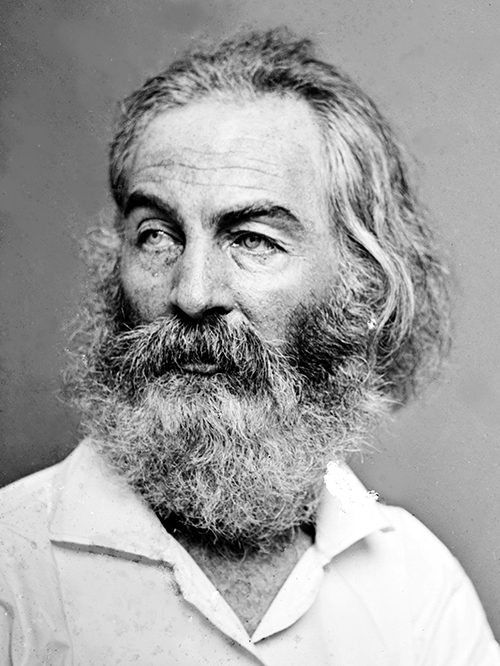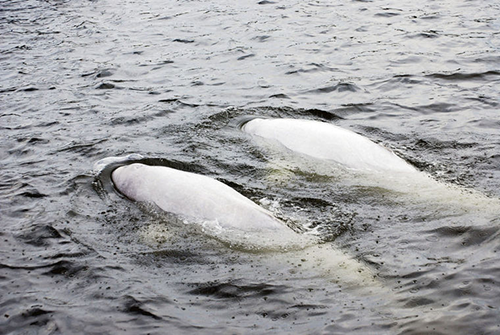Long Island Sound Report Card in context
Bill Dennison ·On June 8, 2015 the Integration & Application Network and its many partners held two simultaneous press conferences to announce the inaugural Long Island Sound report card. I traveled to Glen Cove with Alex Fries while Caroline Donovan and Suzi Spitzer were in Westport, Connecticut. Suzi and Alex previously posted blogs about these press conferences.

Both report card release venues were spectacular. The Connecticut release was located at the Sherwood Island State Park Nature Center. This park had beautiful sand beaches with beach grasses and salt marshes with views of Long Island Sound. The Long Island release was on the grounds of the Webb Institute, a specialized undergraduate engineering college focused on naval architecture and marine engineering. This venue provided spectacular views of the Outer Hempstead Harbor as well as the Long Island Sound Narrows and the Connecticut coast.
The mistresses of ceremonies at both locations were two highly competent senior staff of the National Fish and Wildlife Foundation. Lynn Dywer, Assistant Director of Northeastern Region, National Fish and Wildlife Foundation presided at the Connecticut launch and Amanda Bassow, Director of the Eastern Partnership Office of the National Fish and Wildlife Foundation, presided at the Long Island launch.
The keynote speakers at both events were sitting members of the United States Congress; Senator Richard Blumenthal from Connecticut and Congressman Steve Israel from New York's 3rd District. They both spoke eloquently about the national significance of Long Island Sound. Senator Blumenthal stressed the importance of cooperation and Congressman Israel stressed the economic engine that Long Island Sound provides and the necessity of protecting that investment with good environmental stewardship.
Congressman Israel mentioned a favorite photograph that he has in his office of President Teddy Roosevelt rowing a boat on Long Island Sound with the weight of the world on his shoulders, stressing the importance of this body of water for restoring mental health.

When talking about the Long Island Sound report card, I prefaced my report card summary with the observation that 3 significant events occurred on Long Island during my 1984-1987 stint at Stony Brook University: 1) Hurricane Gloria passed right over Long Island in 1985 causing widespread damage and prolonged power outages, 2) the last time that the New York Mets won the World Series was in 1986, and 3) the "Brown Tide" harmful algal blooms began occurring in Long Island embayments in the summer of 1985. In addition, 3 significant events occurred to me during my Stony Brook stint: 1) I developed a lifelong interest in making my science relevant to society as part of my efforts to understand the "Brown Tide" algal blooms, 2) I traveled to Australia for the first time in 1985 and thirty years later still regularly visit Australia, and 3) I met a girl. We recently celebrated our 25th wedding anniversary and our 19 year old daughter was sailing on Long Island Sound three days ago.

I shared my favorite poem with Congressman Israel which was written by Walt Whitman based on his snorkel trips in Long Island Sound, "The World Below the Brine". Roosevelt and Whitman were contemporaries and the Roosevelt photograph and Whitman poem are examples of iconic Americans drawing inspiration from Long Island Sound.
The World Below the Brine
Walt Whitman, 1819 - 1892
The world below the brine;
Forests at the bottom of the sea—the branches and leaves,
Sea-lettuce, vast lichens, strange flowers and seeds—
the thick tangle, the openings, and the pink turf,
Different colors, pale gray and green, purple, white, and gold—
the play of light through the water,
Dumb swimmers there among the rocks—coral, gluten, grass, rushes
and the aliment of the swimmers,
Sluggish existences grazing there, suspended, or slowly crawling
close to the bottom,
The sperm-whale at the surface, blowing air and spray, or disporting
with his flukes,
The leaden-eyed shark, the walrus, the turtle, the hairy sea-leopard,
and the sting-ray;
Passions there—wars, pursuits, tribes—sight in those ocean-depths—
breathing that thick-breathing air, as so many do;
The change thence to the sight here, and to the subtle air breathed by beings
like us, who walk this sphere;
The change onward from ours, to that of beings who walk other spheres.

The big story about our Long Island Sound report card was that of extremes, with pollution dominating the Sound health in the Western Narrows vs. dilution due to tidal flushing and excellent water quality in Eastern Long Island Sound and a strong gradient in between. Just as pollution and dilution represented the extremes, we learned of two recent events in Long Island Sound that served to illustrate these extremes. The bad news was that of menhaden fish kills in which the fish swirled near the water surface and then died. The good news was the highly unusual presence of three belugas whales swimming in Long Island Sound. So we have pollution and dead fish contrasting with dilution and beluga whales. I couldn't resist the opportunity to adapt Raffi's song:
Baby belugas in the deep blue Sound,
Swim so wild and you swim so free.
Connecticut above and Long Island below,
Three little white whales in the Sound.
Baby beluga, oh, baby beluga,
Is the water warm?
Is your mama home with you, so happy?

By nesting the embayment report cards within the overall Sound framework, we can assess the integrated health of the waterways. By creating this scientifically-based report card process, we can track our progress in protecting and restoring Long Island Sound. It will be challenging to protect and restore Long Island Sound in the face of population pressure and climate change, but it is heartening that there are still regions in the Sound with good water quality, thriving eelgrass meadows and abundant fish and shellfish. It is also a testament to the strong partnerships and robust monitoring programs that we could produce these Sound wide and embayment report cards.
Following the report card release, I was given a quick tour of the Webb Institute by Rick Royce, Director of Research. The most impressive facility was the ship model towing tank in which scale ship models are used to test the hydrodynamic features like drag forces and propellor design. They even have a high end 3-D printer to manufacture model parts.

Coupled with the simultaneous Connecticut release, these events were well attended and well reported, and the public conversation about the state of the Sound and its embayments was realistic, practical and encouraging. The good news and bad news provided both the inspiration and pragmatic vision that is needed to achieve a healthy and sustainable Long Island Sound in the future. Working closely with people like Carol DiPaola, Coalition to Save Hempstead Harbor and Eric Swenson, Hempstead Harbor Protection Committee, on the Inner Hempstead Harbor report card reminded me of my favorite quote from Margaret Mead, "Never doubt that a small group of thoughtful, committed citizens can change the world. Indeed, it is the only thing that ever has."
About the author
Bill Dennison

Dr. Bill Dennison is a Professor of Marine Science and Vice President for Science Application at the University of Maryland Center for Environmental Science.

